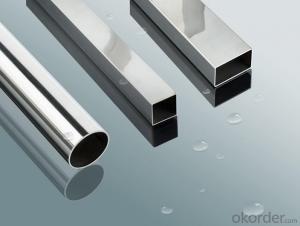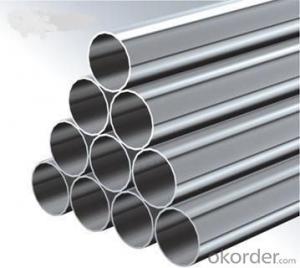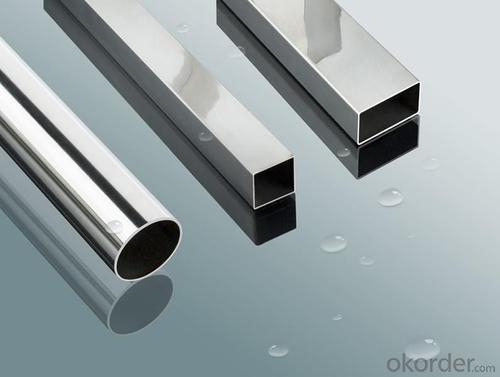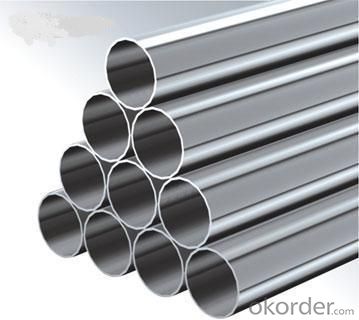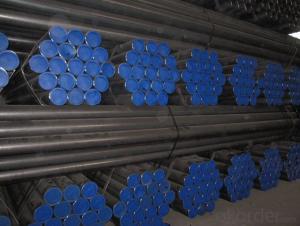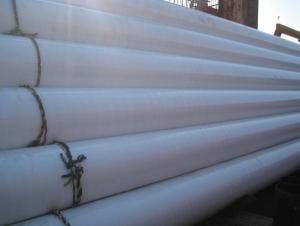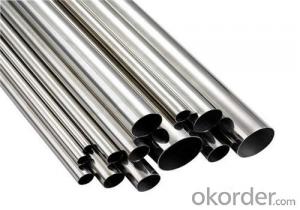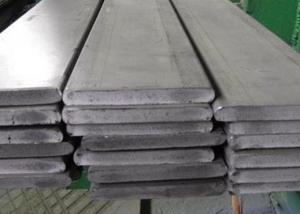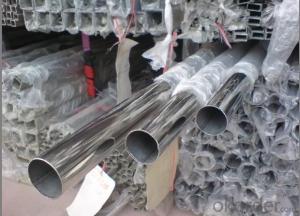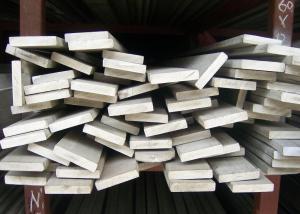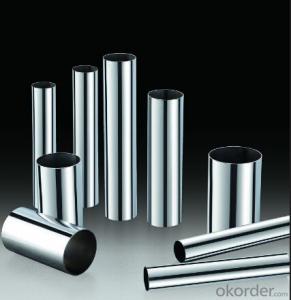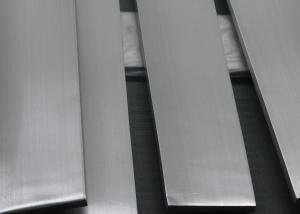Order Small quantity 310s stainless steel pipe
- Loading Port:
- Shanghai
- Payment Terms:
- TT OR LC
- Min Order Qty:
- 5 m.t.
- Supply Capability:
- 4500 m.t./month
OKorder Service Pledge
OKorder Financial Service
You Might Also Like
Specification
Order Small quantity 310s stainless steel pipe
Material | 304:0cr18ni9, 0cr17ni8 201:1cr17mn6ni5n,1cr13mn9ni1n 316:0cr17ni12 or as customer’s request |
Size(round pipe) | 9.5, 12.7, 15.9, 17, 18, 19.1, 20, 21, 22.2, 23, 25.4, 28, 318, 35, 60, 63.5, 73, 76.2, 88.9, 101.6, 114.3, 127, 133, 159, 168, 219 mm or customized |
Size (square pipe) | 10×10,12×12,18×18,23×23,38×38,50×50,70×70,100×100,20×10,23×10,24×12,25×13,36×23, 40×20,50×20,60×15,75×45,80×60,95×45,100×60,150×100 mm or customized |
Size (oval pipe) | 30×15,80×40 mm os customized |
Thickness | 0.24-3 mm |
Length | 6m or according to customer’s request |
Outer diameter | 6.35-219mm |
Tolerance | Outer diameter :±0.2mm |
Thickness :±0.02mm | |
Length :±0.5mm | |
Process method | Code drawn, annealed with nitrogen protection, ultrasonic,automatic shape, polished |
Finishing | A: sanded B: 400#-600# mirror C: hairline brushed D: TIN titanlum E : HL brushed & mirror (two kinds of finishing for one pipe) |
IF YOU HAVE ANY INTEREST,PLEASE CONTACT US! |
stainless steel pipe
Square pipe and rectangle pipe
round pipe

Application of pipes
Production process
Other stainless steel sheet and coils
FAQ
Small quantity, short time delivery
If we have stocks, we can ship from a minimum of 1 kg sample in a few days.
We also manufacture customorder materials in amounts of 300 kg
and up (Some materials are allowed 50 kg) in as few as 3 weeks.
High-precision thickness
We guarantee thickness tolerances that cannot be reproduced by competitors.
Example:
t <0.30mm Tolerance ±1 - 3 μm guaranteed
0.30 mm≤t Tolerance ± 1% guaranteed
Ability to add multiple features
We are capable of adding a variety of features to metallic materials resin coating, plating, bonding different kinds of metal, multigage skiving, etc.
Unique technology and custom-made solutions
We provide customed solutions to your problems with our unique technologies and well versed knowledge of materials acquired through our experience of manufacturing 50,000 items.
Choose the appropriate base metals for your needs.
We carefully balance quality, delivery time and price,procure various base metals from all over the world.
We manufacture appropriate products to your needs.
To control metal structure(chemical formation)
We can manufacture ultrafine metal structures with a grain size of 1 μm. Using finer grain sizes
provides benefits such as hardenability,balancing strength and ductility, and precision press processing.
Lower total
We taking your processing into account,offer you reduce a total cost by using our product.
Global network
Our plant located in Japan, Shanghai and Taiwan,we also support flexibly local
procurement and production transfer.
Why choose us
The reason why you Choose us
ISO System
SGS and BV Audited company .
Industry experience over 20 years.
Management Systems-Internal Software
Finished Product Inventory-More Than 500 Tons.
Raw Material inventory -Over 800 Mertic Tons.
Shipment of goods -More than 30 countries worldwide.
We have the most convenient transport and prompt delivery.
We offer competitive price with best service .
We have high technical production line with top quality products.
We have win high reputation based on best quality products.
- Q: Can stainless steel pipes be buried in soil?
- Yes, stainless steel pipes can be buried in soil. Stainless steel is highly resistant to corrosion and can withstand the harsh conditions of being buried underground, making it a suitable choice for various underground applications such as drainage, sewage, and water supply systems.
- Q: Are stainless steel pipes suitable for liquid storage tanks?
- Indeed, liquid storage tanks can accommodate stainless steel pipes. Stainless steel exhibits remarkable resistance to corrosion, rendering it exceptionally well-suited for housing a multitude of liquids, such as water, chemicals, and foodstuffs. Its exceptional resistance to rust, oxidation, and staining guarantees the preservation of the stored liquids' purity. Moreover, stainless steel pipes possess impressive strength and durability, enabling them to withstand the weight and pressure exerted by the stored liquids. Furthermore, stainless steel's ease of cleaning and maintenance further establishes its dependability for liquid storage purposes.
- Q: Can stainless steel pipes be lined?
- Yes, stainless steel pipes can be lined. Lining stainless steel pipes is a common practice to enhance corrosion resistance, prevent contamination, or improve flow characteristics. Various lining materials such as plastic, rubber, or ceramics can be used to line stainless steel pipes based on the specific requirements and applications.
- Q: Are stainless steel pipes suitable for pulp and paper mills?
- Yes, stainless steel pipes are suitable for pulp and paper mills. Stainless steel pipes offer several advantages that make them ideal for use in this industry. Firstly, stainless steel is highly resistant to corrosion and can withstand harsh chemicals and high temperatures commonly found in pulp and paper mills. This resistance to corrosion ensures that the pipes will have a longer lifespan and require less maintenance, reducing downtime and costs associated with repairs or replacements. Additionally, stainless steel pipes are also known for their strength and durability. They can handle high-pressure applications, ensuring a reliable and efficient flow of materials throughout the mill. This is particularly important in pulp and paper mills where large volumes of water, chemicals, and pulp need to be transported. Furthermore, stainless steel pipes are hygienic and easy to clean, making them suitable for applications in the pulp and paper industry that require strict cleanliness standards. The smooth surface of stainless steel pipes also reduces the risk of contamination and ensures a smooth flow of materials, preventing blockages or clogs that could disrupt production. In summary, stainless steel pipes are indeed suitable for pulp and paper mills due to their corrosion resistance, durability, strength, and ease of cleaning. They provide a reliable and efficient solution for transporting materials, contributing to the smooth operation of the mill and minimizing maintenance requirements.
- Q: How do you calculate the required support spacing for stainless steel pipes?
- To calculate the required support spacing for stainless steel pipes, you need to consider factors such as the pipe material, size, weight, temperature, and the support system used. The most common method is to refer to industry standards and guidelines, such as the American Society of Mechanical Engineers (ASME) B31.1 or B31.3 codes, which provide formulas and charts to determine the appropriate support spacing based on these factors. Additionally, consulting with a structural engineer or piping specialist is recommended to ensure accurate calculations and comply with safety regulations.
- Q: What is the difference between seamless and SAW stainless steel pipes?
- Seamless and SAW (Submerged Arc Welding) stainless steel pipes find utility in various industries for the transportation of fluids or gases, but they possess certain distinct dissimilarities. 1. Manufacturing Process: The primary discrepancy resides in their manufacturing processes. Seamless stainless steel pipes emerge from the piercing of a solid billet, shaping it into a hollow tube. Conversely, SAW pipes result from the welding of multiple layers of steel plates together, employing a submerged arc welding technique. 2. Appearance: Seamless pipes boast a sleek and polished surface, imparting them with a more visually pleasing aspect. Conversely, SAW pipes display discernible welding seams, which can manifest internally or externally. 3. Strength and Durability: Seamless pipes generally exhibit superior strength and durability compared to SAW pipes. The absence of welding seams in seamless pipes eradicates potential weak points, rendering them less prone to failure under elevated pressure or extreme temperatures. 4. Size Range: Seamless pipes offer a broader spectrum of sizes, encompassing both small and large diameters. SAW pipes, limited by the welding process, are primarily employed for larger diameter pipes. 5. Cost: In terms of cost-effectiveness, SAW pipes typically hold an advantage over seamless pipes. The manufacturing process of SAW pipes entails the welding of multiple plates, which is less expensive than the process of creating a seamless pipe from a solid billet. 6. Applications: Seamless pipes find common usage in industries where high pressure and corrosion resistance are imperative, such as oil and gas, petrochemical, and power generation. SAW pipes, owing to their larger size range and cost-effectiveness, are frequently utilized in infrastructure projects like water supply, sewage systems, and construction. In conclusion, the principal discrepancies between seamless and SAW stainless steel pipes lie in their manufacturing process, appearance, strength, size range, cost, and applications. The choice between the two hinges upon the specific requirements of the project and the desired characteristics of the pipe.
- Q: Are stainless steel pipes suitable for extreme temperatures?
- Yes, stainless steel pipes are suitable for extreme temperatures. Stainless steel is known for its excellent heat resistance properties, making it a popular choice for applications that involve high temperatures. Stainless steel pipes can withstand both extremely high and low temperatures, making them suitable for a wide range of industries such as oil and gas, chemical processing, power generation, and aerospace. The high chromium and nickel content in stainless steel alloys contribute to their ability to resist corrosion and oxidation, allowing them to maintain their structural integrity even under extreme temperature conditions. Additionally, stainless steel pipes have low thermal expansion and contraction rates, ensuring that they can withstand thermal cycling without significant distortion or damage. Overall, stainless steel pipes are a reliable and durable option for handling extreme temperatures.
- Q: Can stainless steel pipes be used for gas pipelines?
- Yes, stainless steel pipes can be used for gas pipelines. Stainless steel is highly resistant to corrosion and can withstand high pressure and temperature conditions, making it suitable for carrying gases safely and efficiently. Additionally, stainless steel pipes are durable and have a long lifespan, making them a reliable choice for gas transportation.
- Q: Can magnets attract stainless steel tubes?
- Stainless steel is becoming more and more popular because of its beautiful appearance, corrosion resistance and not easy to damage. More and more pots, city sculpture, architecture, decoration room etc. the use of stainless steel, stainless steel on discrimination but people do not know, some customers buy stainless steel kitchenware, stainless steel utensils with magnets in to try to try. It is stainless steel that attracts the magnet, but stainless steel can not be sucked. It seems that there is a misunderstanding about stainless steel.
- Q: What are the different grades of stainless steel pipes?
- There are several different grades of stainless steel pipes available, each with its own unique properties and applications. The most commonly used grades include: 1. Grade 304: This is the most widely used stainless steel grade for pipes. It offers excellent corrosion resistance, good heat resistance, and high strength. Grade 304 is suitable for a wide range of applications, including water pipes, food processing equipment, and architectural structures. 2. Grade 316: This grade is known for its superior corrosion resistance, particularly in environments with high chloride content. Grade 316 pipes are often used in marine applications, chemical processing plants, and medical equipment where resistance to pitting and crevice corrosion is crucial. 3. Grade 321: This grade is stabilized with titanium, which makes it resistant to intergranular corrosion after exposure to high temperatures. Grade 321 pipes are commonly used in applications involving elevated temperatures, such as exhaust systems, furnace parts, and heat exchangers. 4. Grade 409: This grade is specifically designed for high-temperature applications such as automotive exhaust systems. It offers good heat resistance and is highly resistant to corrosion and oxidation. 5. Grade 904L: This grade is a highly alloyed austenitic stainless steel that provides excellent resistance to a wide range of corrosive environments, including sulfuric acid, phosphoric acid, and chloride solutions. Grade 904L pipes are often used in chemical processing plants, pulp and paper industry, and desalination plants. It is important to select the appropriate grade of stainless steel pipe based on the specific requirements of your application to ensure optimal performance and longevity.
Send your message to us
Order Small quantity 310s stainless steel pipe
- Loading Port:
- Shanghai
- Payment Terms:
- TT OR LC
- Min Order Qty:
- 5 m.t.
- Supply Capability:
- 4500 m.t./month
OKorder Service Pledge
OKorder Financial Service
Similar products
Hot products
Hot Searches
Related keywords
